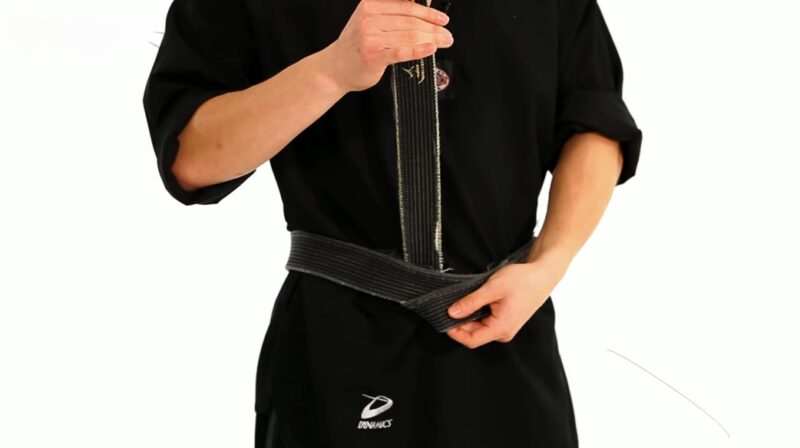Taekwondo, a Korean martial art, is not just about mastering kicks and punches; it’s also about understanding and respecting the traditions that come with it. One such tradition is the proper tying of the Taekwondo belt, which symbolizes the practitioner’s rank and journey in the martial art.
The belt is not just a tool to keep your uniform in place; it represents your progress, dedication, and the time you’ve invested in mastering the art.
Step-by-Step Guide
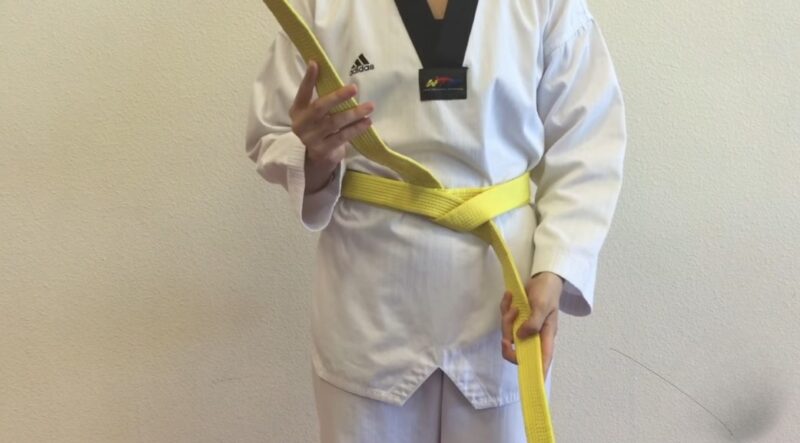
This process may seem complex at first, but with practice, you will get used to it.
Finding the Center of the Belt
- Lay the belt flat in front of you, ensuring that it is not twisted.
- Find the center of the belt and place it on your belly button.
Wrapping the Belt Around Your Waist
- Wrap both ends of the belt around your waist, crossing them at the back and bringing them back to the front.
- Ensure that the belt is snug but not too tight, allowing for movement and breathing.
Tying the Knot
- Take the left end of the belt and place it over the right end, creating a loop.
- Pull the left end through the loop, creating a tight knot.
- Adjust the ends of the belt so that they hang evenly.
How to Get a Perfect Knot?
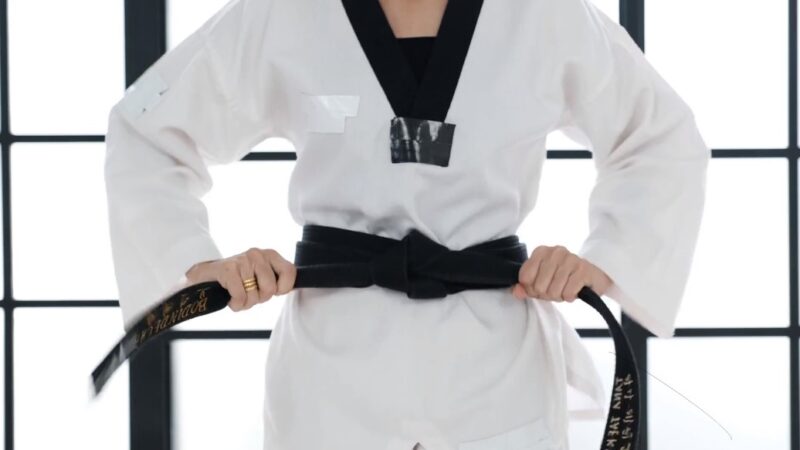
Tying a Taekwondo belt perfectly takes practice. Here are some tips and tricks to help you master the art.
Create an Even Wrap
- Pay attention to how you wrap the belt around your waist. The goal is to have both ends of the belt hanging evenly after tying the knot.
- Practice in front of a mirror to ensure that you are wrapping and tying the belt correctly.
Adjust the Tightness
- You should be able to breathe and move comfortably.
- If the belt is too loose, it will come undone during practice. If it’s too tight, it will be uncomfortable and restrict movement.
Common Mistakes to Avoid
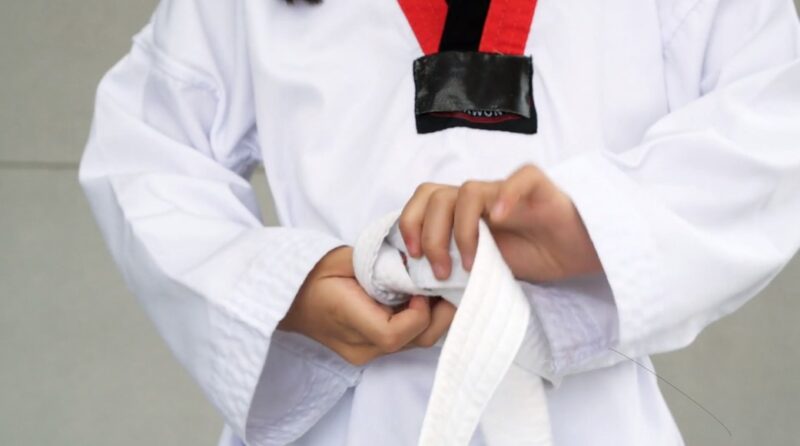
Even seasoned practitioners can make mistakes when tying their belts. Here are some common mistakes to avoid.
Twisting the Belt
- Ensure that the belt is not twisted when you lay it flat in front of you.
- A twisted belt will not sit properly and will come undone easily.
Uneven Ends
- Make sure that both ends of the belt are even after tying the knot.
- Uneven ends can be uncomfortable and look untidy.
Don’t Forget About Maintenance

Taking care of your Taekwondo belt is crucial in maintaining its condition and respecting the tradition.
Washing
- Avoid washing your belt frequently as it can fade the color and weaken the fabric.
- If your belt gets dirty, try spot cleaning it with a damp cloth and mild detergent.
Storing
- When not in use, fold your belt neatly and store it in a cool, dry place.
- Avoid leaving your belt crumpled or tied, as this can cause creases and weaken the fabric.
It Will Take Some Time
Like any other skill in Taekwondo, tying your belt perfectly requires practice. Don’t get discouraged if you don’t get it right the first time; keep practicing, and you will improve.
Practice More
Set aside time to practice tying your belt, even when you’re not heading to a training session. The more you practice, the more natural it will become, and the quicker you’ll be able to tie your belt perfectly.
Don’t be Afraid to Ask For Help
If you’re struggling to tie your belt correctly, don’t hesitate to ask your instructor or a more experienced practitioner for guidance. They will be more than happy to help and will appreciate your dedication to getting it right.
Typical Challenges
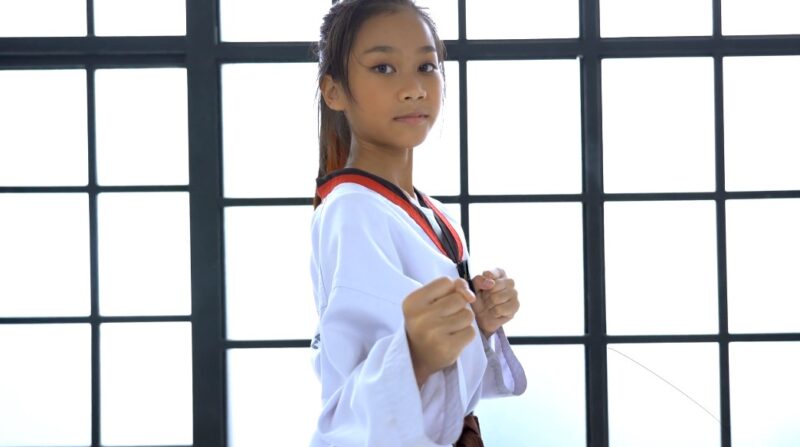
Even with practice, you might encounter issues when tying your belt. Here are some common problems and how to fix them.
The Belt Comes Undone During Practice
If your belt frequently comes undone during practice, it might be tied too loosely or not knotted correctly. Pay attention to the tightness of the belt and ensure you are tying a proper knot.
The Ends of the Belt Are Not Even
Uneven ends can be uncomfortable and look untidy. If you notice that the ends of your belt are not even, untie the belt and start again, paying close attention to how you wrap the belt around your waist.
Patience is Crucial
This journey will be filled with challenges and learning opportunities. Tying your belt correctly is a small yet significant part of it, especially when it comes to learning how to be more patient and resistant.
Why Is It So Important?
Getting a belt will require a lot of work and determination, learning to tie the belt doesn’t happen overnight as well. It requires patience and consistent practice. Understand that making mistakes is part of the learning process, and each mistake is an opportunity to learn and improve.
Therefore, you can use this as a lesson that you will implement later in other parts of the practice. The key is to look at the tying as an integrated part of the Taekwondo lessons.
Stay Determined
There will be days when tying your belt seems like the most challenging task, especially when you’re running late for practice or feeling frustrated. These are the moments when perseverance becomes crucial. Push through the challenges, tie your belt with care and precision, and step onto the mat with confidence.
Different Colors of the Belt
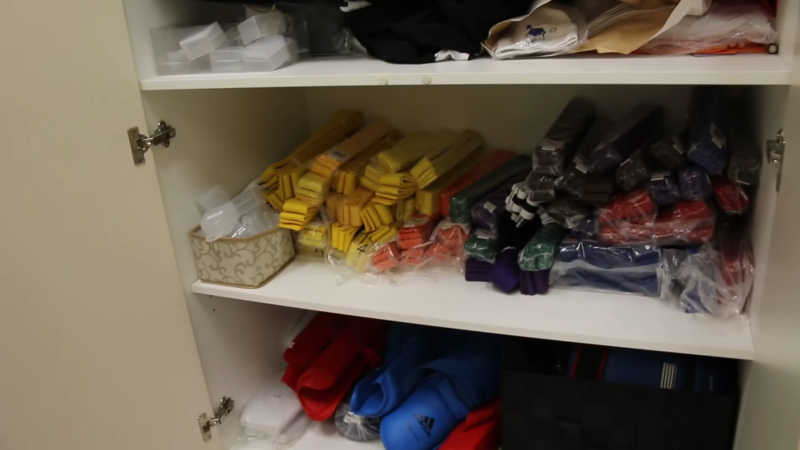
The Taekwondo belt system consists of various colors, each representing a different level of proficiency. Beginners start with a white belt, symbolizing purity and the start of the journey. As practitioners progress, they earn belts of different colors, ultimately aiming for the black belt, which represents mastery.
After getting the black one, there are some additional levels of black category that will represent your experience and skills. There are many types of belts available, and here is a detailed representation of their meaning.
| Belt Color | Level | Description |
|---|---|---|
| White | 10th – 9th Gup (Grade) | Beginner level. Symbolizes purity and the starting point of the Taekwondo journey. |
| Yellow | 8th – 7th Gup | Introduction to the basics. Represents the first beams of sunlight giving life and growth. |
| Green | 6th – 5th Gup | Intermediate level. Symbolizes growth and development of skills. |
| Blue | 4th – 3rd Gup | Further growth and improvement. Represents the sky, towards which the plant grows. |
| Brown/Red | 2nd – 1st Gup | Advanced level. Symbolizes danger, cautioning the student to exercise control. |
| Black | 1st – 9th Dan (Degree) | Expert level. Indicates the maturity and proficiency in Taekwondo. Black belt levels go up in Dan. |
The Symbolism and Respect
It’s important to wear your belt with respect and pride. The way you tie and wear your belt reflects your respect for the martial art, your instructors, and yourself. A neatly tied belt shows that you are disciplined and take your practice seriously. As a beginner, the tying process could be more challenging.
FAQs
How do you tie a kids Taekwondo belt?
Tying a Taekwondo belt for kids follows the same basic steps as for adults, but you might need to take extra care to ensure it’s not too tight or loose. Start by finding the middle of the belt and placing it on their belly. Wrap the ends around their waist, cross them at the back, and bring them back to the front. Tie a secure knot, ensuring the ends are even and the belt lies flat against their uniform.
How do you tie an ATA belt?
To tie an ATA (American Taekwondo Association) belt, start by holding one end of the belt on your right side and wrap the other end around your body twice, ensuring it lays flat. Bring the top end down and under both layers of the belt, pulling it up. Then, fold the bottom end over the top, tucking it through the loop created, and pull both ends to secure the knot. Adjust as needed to ensure the ends are even.
How do you wash a Taekwondo uniform?
Wash your Taekwondo uniform (Dobok) in cold water on a gentle cycle, using a mild detergent. Avoid using bleach or fabric softeners, as they can damage the fabric. Pre-treat any stains with a gentle stain remover before washing. After washing, hang the uniform to air dry, avoiding direct sunlight to prevent fading. Do not tumble dry, as this can cause shrinkage.
How tight should a Taekwondo belt be?
A Taekwondo belt should be tied snugly around the waist to ensure it stays in place during movement, but not so tight that it restricts breathing or movement. You should be able to comfortably slide your hand between the belt and your uniform. Adjust the tightness as needed to ensure comfort and security.
How fast can you get a black belt?
The time it takes to achieve a black belt in Taekwondo varies depending on the individual, their commitment to training, and the specific requirements of their Taekwondo school. On average, it can take anywhere from 3 to 5 years of consistent training and practice. Progressing through the belt ranks requires dedication, consistent practice, and successful completion of testing and requirements at each belt level.
Summary
Tying a Taekwondo belt is a skill that represents more than just the physical act. It teaches patience, perseverance, and respect. It builds a strong foundation for practice and creates a sense of readiness and focus.
Remember, every time you tie your belt, you are not just preparing for practice; you are embracing the traditions, discipline, and community of this martial art technique.
